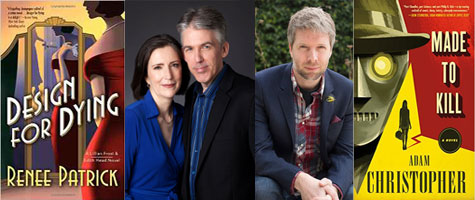
Read this exclusive two-part Q&A between Adam Christopher, author of Made to Kill, and Renee Patrick, the married writing team of Rosemarie and Vince Keenan who authored Design for Dying, and then make sure you're signed in and comment for a chance to win a copy of both of their latest books!
Adam Christopher (Made to Kill) asks Renee Patrick aka Vince and Rosemarie Keenan (Design for Dying) questions about the role of fashion, Olde Worlde Hollywood
Adam Christopher: I have to ask—what is it with clothes? Design for Dying is, obviously, very much focused around the wardrobe department at Paramount Pictures, somehow managing to mix fashion and crime. And it works! What was the inspiration behind it?
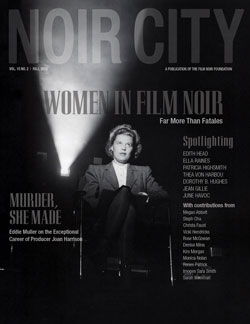 Rosemarie Keenan: This all started as an article for Noir City, the magazine of the Film Noir Foundation, which Vince edits. The magazine hadn’t done a piece about fashion in noir, which to me is essential to the feel of those movies. Researching the role of costume designers got me thinking about the nature of their work. They know everyone’s secrets—their real sizes, their figure flaws—and they deal with stars at very intimate moments. It occurred to me a costume designer would be a great person to investigate wrongdoing behind the scenes.
Rosemarie Keenan: This all started as an article for Noir City, the magazine of the Film Noir Foundation, which Vince edits. The magazine hadn’t done a piece about fashion in noir, which to me is essential to the feel of those movies. Researching the role of costume designers got me thinking about the nature of their work. They know everyone’s secrets—their real sizes, their figure flaws—and they deal with stars at very intimate moments. It occurred to me a costume designer would be a great person to investigate wrongdoing behind the scenes.
Vince Keenan: And, I know a good idea when I hear one. Clothes provide a fascinating window into Hollywood life and lore. Plus, I figured I’d learn something. I’m not exactly known for my wardrobe.
AC: One of the main characters is a real person—Edith Head. Did you decide from the beginning to base a mystery novel around her, or did the idea of using a real person come later? Late in the book, we have cameos from other stars of the period—one of whom even plays an important role. Again, this is totally different to how I used characters in Made to Kill. How did you approach this?
VK: Edith was always the core of Rosemarie’s idea.
RK: I started with Edith because her career was so long and she’d worked on so many essential noir films—Double Indemnity, the Alan Ladd/Veronica Lake films.
VK: It made sense to use her as a protagonist because she remains an iconic figure. She was on a postage stamp, after all. She inspired a character in The Incredibles.
RK: And once you have Edith, you have to have stars. Our real-life celebrities provide color and verisimilitude. They were actually on the Paramount lot at that time, doing their jobs as Edith was doing hers.
VK: That’s key to the relationship between Edith and her leg woman, would-be-actress-turned-shopgirl Lillian Frost. Lillian’s not star-struck. She knows how demanding making movies is.
RK: Glamour is hard work, and they both know it.
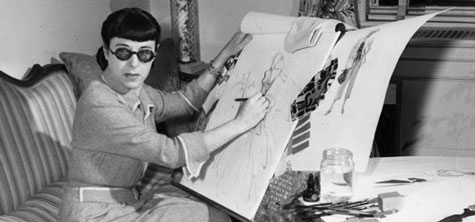
AC: Let’s cut to the chase—what is it about Old World Hollywood? Why are we still interested? And, why does it work so well for stories like this? Are we seeing a resurgence in interest in period storytelling—in books or TV/film? Agent Carter Season 2 was set in 1940s Hollywood and there is the recent film Hail, Caesar! to name but two examples.
VK: And Woody Allen’s latest movie, and the new TV series based on Fitzgerald’s The Last Tycoon…damn. We may be coming to this too late.
RK: Or just in time.
VK: I think the fascination is that era is so different from how we experience celebrity now. During the Golden Age of Hollywood, there was a sense of distance, of mystery.
RK: And stories like this are a way of bridging the moat. Readers want that feeling of going behind the scenes. They don’t want a tell-all, necessarily, full of dirt and scandal.
VK: Although that never hurts.
RK: It’s more they want a sense of what these famous personalities were like in unguarded moments. They want to eavesdrop on Bob Hope as he chats with a wardrobe mistress.
VK: I doubt this material will ever go out of style. Every year, you turn on the Academy Awards red carpet show and the fashion guy says, “The watchword this year is Old Hollywood Glamour.”
RK: Every single year. That’s always the watchword. It’s never, like, disco.
AC: Edith Head’s work, the inner sanctum of Paramount, the fabulous parties—including the come-as-you-were-caught-on-camera one—how did you research it? Did such parties happen? Is Design for Dying an historical document, or have you pushed the boundaries of reality a little?
RK: The come-as-you-are party is real.
VK: That came right out of a fantastic 1941 non-fiction book called Hollywood by Leo Rosten, a New Yorker writer, who also scripted a number of noir films. We found it in a used book store. Those places are treasure troves.
RK: We went through Edith Head’s papers at the Academy of Motion Picture Arts and Sciences’ Margaret Herrick Library and had plenty of help from the archivists at Paramount. We also gleaned a lot from gossip columns and fan magazines. Not that they’re gospel, but they show you how the public saw the stars.
VK: We want to be as faithful to the history and to Edith’s life as possible, but we’re also trying to be faithful to the movies of the period.
RK: Design is deliberately a little fanciful, a little screwball, because the movies of 1937 were like that. If the characters occasionally sound as if they’re in a 1930s movie as opposed to in the 1930s…we don’t really have a problem with that.
AC: As movies are clearly more influential on Design for Dying, what are your period picks? Top 5 Golden Age Hollywood movies?
Chosen after much debate, and several nights spent in separate rooms:
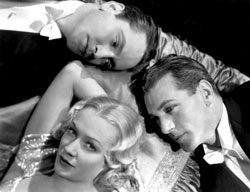 Design for Living (1933)—because it’s the height of Pre-Code sophistication, not because we riffed on the title.
Design for Living (1933)—because it’s the height of Pre-Code sophistication, not because we riffed on the title.
42nd Street (1933)—the quintessential backstage musical.
The Women (1939)—that all-female cast! That fashion sequence!
The Palm Beach Story (1942)—Preston Sturges at his screwball best.
Double Indemnity (1944)—proof that a talented filmmaker could go as dark as he wanted, Production Code be damned. With costumes by Edith Head.
Ask us tomorrow and the list will be completely different. With King Kong and at least one Astaire/Rogers picture on it.
AC: Gimlets. It’s time to settle the matter. Terry Lennox’s preferred recipe—half gin and half Rose’s Lime Juice and nothing else—is surely the definitive version. Preferably drank at 5pm. Do we need to have a long and fractious argument over this?
RK: Include me out. I’m going to leave this to the cocktail writer.
VK: Yes, we do need to have an argument. Rose’s Lime Juice is a pale green imitation of its former self, at least in the U.S., made with generous lashings of high fructose corn syrup. It doesn’t taste anything like what Chandler drank. And, you can’t make a gimlet with only lime juice, because that’s a gin sour.
A bartender friend taught me to make an easy lime cordial using cold infusion. Basically, you zest half a lime to three-quarters of an ounce of simple syrup per drink, and let the mixture sit for fifteen minutes before straining the zest out. It sounds like a lot of work, but it’s worth it. Use equal parts lime juice and lime cordial plus gin. That’s how you make a gimlet.
Part II—where the tables have turned and Renee Patrick (Vince and Rosemarie Keenan) gets to ask Adam Christopher some questions of their own:
Renee Patrick: Among the many things we loved in Made to Kill is the dynamic between Ray and Ada. Raising the question: are all private eyes' secretaries smarter than their bosses?
Adam Christopher: Ha! Of course…or at least they should be. That would be my number one factor if I ever had to hire a PI; I’d want to interview the secretary as well as the detective…
RP: Raymond Chandler is clearly an influence because you've managed to write his lost sci-fi epic. Who's your favorite Los Angeles writer other than Chandler? What's a favorite LA book?
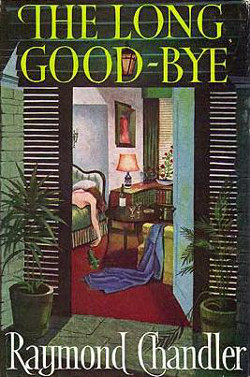 AC: Probably James Ellroy, although maybe that’s an obvious answer. He has LA in his blood. My favorite LA book has to be The Long Goodbye, although that’s breaking the no-Chandler rule of this question. Too bad!
AC: Probably James Ellroy, although maybe that’s an obvious answer. He has LA in his blood. My favorite LA book has to be The Long Goodbye, although that’s breaking the no-Chandler rule of this question. Too bad!
RP: In setting your book in the 1960s, were you consciously attempting to avoid Chandler's time period?
AC: Exactly that—Chandler died in 1959, but I thought that if he had ever written a science fiction novel, rather than setting it way into the future, he’d actually place it in that near-future bracket. Which, for him, would be the 1960s. It just felt right—Chandler wrote about the Los Angeles that he knew, and I think that’s what he would have kept on doing. And, from our point of view, that near-future timezone is now the rapidly receding past, which makes for an interesting retro-sci-fi feel. That’s actually one of the things I love about old science fiction from the 1940s and 1950s, the way it has dated, which gives it this strange alt-universe fantasy feel. So in Made to Kill, there are robots in the 1960s. Because, of course there were!
RP: In Made to Kill, you've reimagined 1960s Los Angeles. What influenced and informed your choices?
AC: It was a case of taking the LA—and more specifically the Hollywood—of that period (the 1950s and 60s) and providing just enough for readers to imagine the world for themselves. I think this really works best when you’re working with a setting like this. This period and this location is well known, or at least there is a certain image of it in the public consciousness, so I just wanted to provide the atmosphere and the flavor and let the readers do the heavy lifting in their own minds.
Having said that, I did try and make it as historically accurate as possible—there are plenty of landmarks, and I was helped to no end by hours of home movie footage that people took in the 50s and 60s of the Sunset Strip and other central Hollywood streets. I guess tourists were agog at all the bright lights and flashy signs, so there are reels and reels of footage. A lot of it is online, too. It’s a fascinating glimpse into a lost world.
RP: The movie business is essential to your plot. How much do movies affect your storytelling and your sense of Los Angeles? What are some favorite LA movies?
AC: I set Made to Kill in Hollywood because Raymond Chandler set his books in Hollywood, but as this was the start of a new series, it seemed clear I had to tie it into the motion picture business. So, hopefully there are hints of that glamorous industry lurking at the edges of the story—it’s peripheral to the story, but it’s there.
LA movies? Goodness. Most of my favorites are actually set over on the opposite coast—Cat People, The Seventh Victim. I prefer LA TV—like Honey West. Actually, Honey West was another great source of period LA detail, set as it is in 1965 (and featuring loads of LA location filming).
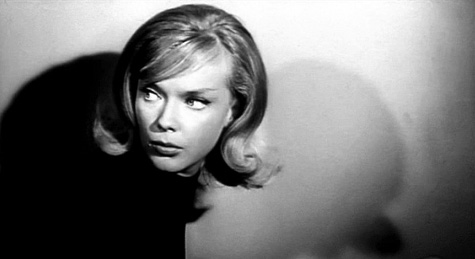
RP: We were able to use real movie stars in Design for Dying, while you invented a stellar cast of luminaries who all seemed familiar. Who were the inspirations for your bogus, bold-faced names?
AC: Chandler’s own work is full of some great names, particularly among the villains, and for Made to Kill, I wanted some equally memorable characters—I wanted names that bounced off the tongue, having a certain rhythm that made them memorable. I like to play with names in all my work, and I pay attention to syllables and beats, which is not that far removed from what Hollywood stars do, or did, when they had to come up with screen or stage names. There’s even a joke in the book: when Ray discovers that Fresco Peterman’s real name is…Fresco Peterman, he can’t quite believe it, nor can Ada. On the other hand, a relatively normal name like Charles David—named after a friend of mine—is revealed to be a pseudonym.
I wanted to avoid using the names of any real stars of the period, mostly because this book was supposedly set in the “future,” so Chandler would have made them all up. Although, there is a reference to Marilyn Monroe, who is apparently alive and well in 1965—another suggestion that this universe is not the one we are familiar with.
RP: We'd like to reserve a table at the Temple of the Magenta Dragon, please. The legendary nightspots of 1930s Hollywood like the Trocadero are part of the atmosphere in Design for Dying. How much do you miss that era of nightlife?
AC: It’s all part of that lost world of Hollywood glamour. To us, now, that whole golden age of Hollywood seems sophisticated and romantic, although there’s always a risk at looking back at a period through rose-tinted glasses. The nostalgic draw of the period has created its own mythos, in a way, and the nightlife of the time is certainly part of that. The lifestyles of the rich and famous of the time wouldn’t be complete without glitzy parties, cocktails, tuxedos, and a lot of fur and diamonds!
RP: We loved how attached Ray is to his clothes. Is wardrobe always an important part of character to you, even for robots?
AC: Ray’s interest in clothes, such as it is, came about after some serious over-thinking on my behalf. He’s a robot built to look kinda like a man, within the limits of 1960s technology. He’s also a private detective (or at least he was), and is free to move about in a world where he is actually the only robot left.
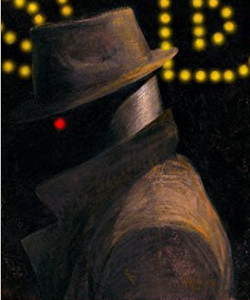 So…he would wear clothes, right? A trench coat and fedora like any good PI, because he doesn’t want to stick out in a crowd. But as Ray’s personality is based on a human template, giving him human mannerisms and a personality, then he would feel silly NOT wearing clothes. So, this leads to the delicious irony of a 6’ 10” robot made out of bronzed titanium walking down the street minding his own business, wearing a suit and coat and hat just like he’s anybody else. And he knows that—he knows he’s a robot, not a human—but robots were supposed to be integrated into the general public, at least when the big public robot program was running in the 1950s.
So…he would wear clothes, right? A trench coat and fedora like any good PI, because he doesn’t want to stick out in a crowd. But as Ray’s personality is based on a human template, giving him human mannerisms and a personality, then he would feel silly NOT wearing clothes. So, this leads to the delicious irony of a 6’ 10” robot made out of bronzed titanium walking down the street minding his own business, wearing a suit and coat and hat just like he’s anybody else. And he knows that—he knows he’s a robot, not a human—but robots were supposed to be integrated into the general public, at least when the big public robot program was running in the 1950s.
In a story like Made to Kill, which has a distinct period setting—and a period which is, in many ways, very different to the present—clothes are important for the characters and are part of the whole imagery of the book—there’s Ray in his coat and hat, but also Eva McLuckie and her red dress, Fresco Peterman’s terrible taste in casual jackets, etc.
Images via Tumblr, Odyssey, Vince Keenan's blog, & The James Bond Social Media Project
Comment below for a chance to win a copy of Made to Kill by Adam Christopher and Design for Dying by Renee Patrick!
To enter, make sure you're a registered member of the site and simply leave a comment below.
TIP: Since only comments from registered users will be tabulated, if your user name appears in red above your comment—STOP—go log in, then try commenting again. If your user name appears in black above your comment, You’re In!
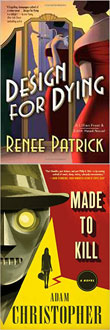 Adam Christopher/Renee Patrick Comment Sweepstakes: NO PURCHASE NECESSARY TO ENTER OR WIN. A purchase does not improve your chances of winning. Sweepstakes open to legal residents of 50 United States, D.C., and Canada (excluding Quebec), who are 18 years or older as of the date of entry. To enter, complete the “Post a Comment” entry at https://www.criminalelement.com/blogs/2016/06/two-part-qa-between-adam-christopher-and-renee-patrick-comment-sweepstakes beginning at 2:00 p.m. Eastern Time (ET) June 16, 2016. Sweepstakes ends 1:59 p.m. ET June 23, 2016. Void outside the United States and Canada and where prohibited by law. Please see full details and official rules here. Sponsor: Macmillan, 175 Fifth Ave., New York, NY 10010.
Adam Christopher/Renee Patrick Comment Sweepstakes: NO PURCHASE NECESSARY TO ENTER OR WIN. A purchase does not improve your chances of winning. Sweepstakes open to legal residents of 50 United States, D.C., and Canada (excluding Quebec), who are 18 years or older as of the date of entry. To enter, complete the “Post a Comment” entry at https://www.criminalelement.com/blogs/2016/06/two-part-qa-between-adam-christopher-and-renee-patrick-comment-sweepstakes beginning at 2:00 p.m. Eastern Time (ET) June 16, 2016. Sweepstakes ends 1:59 p.m. ET June 23, 2016. Void outside the United States and Canada and where prohibited by law. Please see full details and official rules here. Sponsor: Macmillan, 175 Fifth Ave., New York, NY 10010.
To learn more or order a copy of Design for Dying, visit:
opens in a new window![]() opens in a new window
opens in a new window![]() opens in a new window
opens in a new window![]() opens in a new window
opens in a new window![]()
To learn more or order a copy of Made to Kill, visit:
opens in a new window![]() opens in a new window
opens in a new window![]() opens in a new window
opens in a new window![]() opens in a new window
opens in a new window![]()
Adam Christopher is a novelist and comic writer. In 2010, as an editor, Christopher won a Sir Julius Vogel award, New Zealand's highest science fiction honor. His debut novel, Empire State, was SciFiNow's Book of the Year and a Financial Times Book of the Year for 2012. In 2013, he was nominated for the Sir Julius Vogel award for Best New Talent, with Empire State shortlisted for Best Novel. His other novels include The Age Atomic and The Burning Dark.
Renee Patrick is the pseudonym for married authors Rosemarie and Vince Keenan. Rosemarie is a research administrator and a poet. Vince is a screenwriter and a journalist. Both native New Yorkers, they currently live in Seattle, Washington. Design for Dying is their first novel.

Sound like a pair of interesting reads. Count me in.
count me in
Looking forward to reading, I’m in.
I’ve always been fascinated by the Golden Age of Hollywood. Wish me luck!
Would love to win these books!!!
I was really impressed by MADE TO KILL, and would recommend it as a refreshing spin on classic Hollywood noir, while still retaining many of the things we love about the sub-genre.
Loved this interview. I’m going to have to try a proper gimlet sometime.
Two for me! Yes!
both sound awesome, and i love the covers
I would love to read the books.
Fascinating and intriguing.
Great interveiw. Looking forward to reading these.
Looks like some great reading!
Extremely interesting. The novels look wonderful.
I like writing teams and interviews but I LOVE winning sweepstakes! Yes!
Looks good
Both of these books sound interesting. Would love to win.
Thank you for the giveaway
Good reads, I hope.
Would love to have these for my Summer Reads on the Beach.
Sounds good. I’d like to read those books.
Both of them sound exciting! Hope I win!
I would love to be introduced to these authors by winning their books.
Fascinating, would love to win!
sound like great reads. thanks
While I don’t mind visits to the past, it is books that inform me how much I don’t want to live there.
I would love to have a chance to read these 2 books. I love mysteries.
Sound like great novels. Can’t wait to read!
interesting
sounds great like both covers
Great interview!
Sounds like good reads.
Please enter me in this sweepstakes.
Thanks —
I would definately like to check these books out.
Well, have to say they both sound wonderful! If I don’t win them, I will be buying them soon.
As an afficiondo of noir and Hollywoodland, these stories sound like fashionably great reads. Look forward to reading both.
Noir is my favorite
I love the discussion about our fascination with Old Hollywood Glamour. We are TCM-watchers at our house, so I definitely fall into that category.
The Ambience of Hollywood’s true glory days, if done well, always adds a mystique that modern settings, Hollywood or others just cannot match. Looking forward very much to this one.
I like trying different takes on mystries so count me in.
Count me in, please!
Great interview.
Too much great stuff in this interview to mention! Loved all the references and both books/series sound fascinating. Thanks for the chance to win.
either or works for me!!
Great interviews. The books sound like great fun and excellent reads. Thanks for the giveaway.
Loved the interview. Design for Dying sounds great. Can’t wait to read it.
I love the idea of the wardrobe department and murder. I’m a big Edith Head fan. Thanks.
Thanks for this contest. Both books sound good!
I’m in. Can’t wait to read these!
Two very interesting books. Thanks for the contest.
Sounds great. Hope I win.
We are fascinated with old world Hollywood because of the skill and talent of the people, on screen, off screen, and writing. They didn’t have all the CGI to lean on so they worked harder or better on telling the story. I will not say there are no talented people of their equal today, but there are not as many and very few in the top tier. Or maybe being told every little detail of the life of current stars diminishes their image and they really are as good as the golden age stars, but I don’t think so.